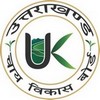About Us
Uttarakhand, formerly known as Uttaranchal and also referred as “Devbhoomi” since times immemorial, got the status of 27th state of India on 9th Nov., 2000. It has two divisions namely Garhwal and Kumaon having a total of 13 districts. It forms North-Western boundary with Himachal Pradesh, North and North-Eastern boundary with Tibet (China) and Eastern with Nepal and Southern with plains of Uttar Pradesh. The climate in the northern part is typically Himalayan having monsoon pattern of rainfall. The climate ranges from subtropical in the southern foot hills to warm temperate in the middle Himalayan valleys. The topographic terrain of the state is largely hilly tract where tremendous potential for tea cultivation is present below 2000m altitude (msl).
The Government of Uttarakhand has envisaged the development of Uttarakhand Tea Development Board envisaging the scope and importance of tea in strengthening the Socio-Economic conditions of small and marginal farmers employment generation for unemployed youths through tea cultivation, the then Government of Uttar Pradesh in the financial year 1993-94 sanctioned an employment generating scheme through tea cultivation entitled “Uttarakhand Tea Development Project.”
Since its inception up until 2004, the Kumaon Mandal Vikas Nigam (KMVN) was the nodal agency for the implementation of the project, after which the Government of Uttarakhand formally set up an independent “Uttarakhand Tea Development Board” with the specific objective of working for the overall development of the tea sector in the state.
Uttarakhand Tea Development board has been contemplating expanding the Tea sector in the state with the help of acquiring more land as well as increasing the production of tea which can provide Uttarakhand’s marginally poor farmers with better employment opportunities while also mapping the indigenous and locally produced Uttarakhand Tea in the national and international arena alongside other variants such as Assam Tea, Darjeeling Tea, Kerala Tea and such.


